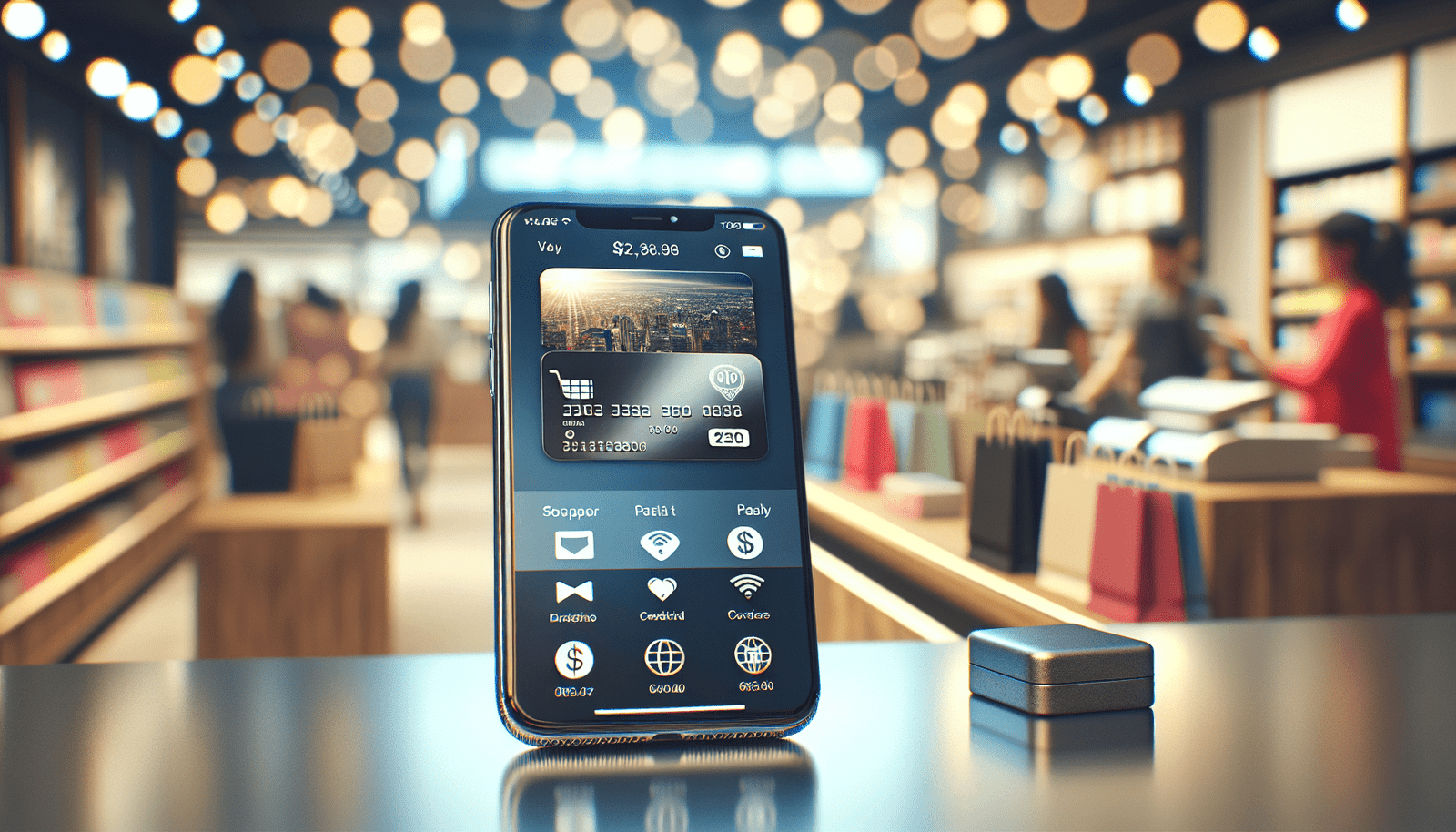Have you ever found yourself fumbling for cash or a credit card at a checkout line while everyone behind you is eagerly waiting? I know I have. The stress of traditional payments often leads to awkward moments, but luckily, the rise of mobile payments is changing the landscape of retail.
Understanding Mobile Payments
Mobile payments allow users to conduct financial transactions through their smartphones or other mobile devices. At its core, this technology provides a convenient, quick, and often secure way to pay for goods and services. I find it fascinating how technology has reshaped the way we handle our financial transactions, transforming not just how I shop, but also how businesses interact with customers.
What Exactly Are Mobile Payments?
To clarify a bit more, mobile payments can occur in several ways. They’re typically classified into two categories: proximity payments and remote payments.
-
Proximity Payments: These happen when I use my smartphone in physical stores. I might wave my device near a point-of-sale terminal to complete my purchase—much faster than digging through my wallet.
-
Remote Payments: These allow me to make purchases online through a mobile app or website. This is incredibly useful for things like ordering food, paying bills, or shopping without the hassle of physical interaction.
Evolution of Mobile Payments
Looking back, it’s impressive to see how far mobile payments have come. I remember the days of cash and card payments being the only options. Now, with platforms like Apple Pay, Google Wallet, and Venmo, I can pay with just a few taps on my phone.
The Early Days
The concept of mobile payments isn’t brand new. It dates back to the early 2000s with Bluetooth and SMS payment systems. However, it wasn’t until smartphones became ubiquitous that mobile payments exploded in popularity. I can’t help but appreciate how rapidly technology evolves and improves our daily experiences.
The Role of NFC Technology
Near Field Communication (NFC) has played an essential role in advancing mobile payments. This technology enables devices to communicate by simply being in close proximity to one another. For instance, when I tap my phone on a payment terminal, it utilizes NFC for a smooth transaction process.
Growth in Popularity
As more people have adopted smartphones, mobile payments have also gained traction. According to a recent statistic I came across, over 50% of consumers already prefer using mobile payments over traditional methods. This shift is a testament to the convenience and security offered by mobile transactions in today’s fast-paced retail environment.
Advantages of Mobile Payments
There are plenty of reasons I embrace mobile payments, and in this section, I’ll share some of the key advantages.
Convenience at Its Best
One of the most appealing aspects of mobile payments is convenience. For example, when I’m shopping, I can complete a transaction in seconds without the need for cash or cards. My mobile wallet contains all my debit and credit cards, which simplifies the checkout experience.
Enhanced Security Features
Contrary to what some might think, mobile payments can be more secure than traditional payment methods. I find comfort in knowing that my financial information is stored securely in a digital wallet that often requires biometric authentication, like a fingerprint or facial recognition. This added security reduces the risk of fraud and identity theft.
Speed and Efficiency
Speed is essential in retail, especially during busy shopping periods. I can attest that mobile payments accelerate the checkout process. With a simple tap or scan, transactions are completed in seconds, reducing long lines and improving the overall customer experience.
Access to Loyalty Programs
Retailers increasingly link mobile payments to loyalty programs. I’ve noticed that when I make mobile payments, offers or rewards are automatically applied to my purchases. This seamless integration encourages repeat business and helps me save money in the long run.
Challenges of Mobile Payments
Although mobile payments offer many benefits, they come with their challenges. Acknowledging these challenges allows me to understand the landscape better.
Technology Barriers
Not everyone is comfortable using mobile payment technologies. Some of my friends prefer cash or physical cards and express skepticism about the security of mobile payments. Education is vital to overcome these barriers, and I often share my positive experiences to help them see the benefits.
Compatibility Issues
Not all devices or terminals are compatible with mobile payments. In my experience, I’ve found that some smaller retailers or markets haven’t adopted these technologies yet. It can be frustrating when my preferred payment method isn’t accepted.
Concerns About Privacy
With every new technology, privacy concerns arise. Many people, including some of my acquaintances, worry about how their data is used when making mobile transactions. As consumers, it’s essential for us to stay informed and support companies that prioritize our privacy and data security.
The Future of Mobile Payments
As I peer into the future of mobile payments, I can’t help but feel excited. The potential for growth and innovation in this sector is vast.
Integration with IoT
The Internet of Things (IoT) is set to bridge various devices and platforms. Imagine being in a smart store where your devices communicate with products around you, simplifying the payment process with automation. It’s enticing to think about how this could streamline shopping, making it even more efficient.
Increased Adoption of Cryptocurrency
We’ve already begun to see mobile wallets adopting cryptocurrencies. In the future, I believe more retailers will accept digital currencies, providing me with even more payment options and flexibility. As cryptocurrency becomes mainstream, mobile payments will likely evolve alongside it.
Biometric Advances
While most mobile payment systems already incorporate biometric authentication, such as fingerprints and facial recognition, I anticipate even more advanced methods will emerge. These technologies could be refined, allowing for faster, more secure payments.
Contactless Payment Growth
As a result of the pandemic, contactless payments have surged in popularity. It looks like this trend will maintain its momentum as consumers continue to value safety and convenience in their shopping experiences.
How Businesses Can Adapt
Businesses must respond proactively to the growing trend of mobile payments. This means not only adopting new technologies but also understanding the preferences of their customers.
Upgrading Payment Systems
Retailers need to ensure their payment systems are equipped to handle mobile transactions. I often prefer shopping at stores that offer various payment methods, so retailers should take note and upgrade their systems accordingly.
Training Employees
For many businesses, training employees on how to process mobile payments is critical. Knowledgeable staff can enhance the customer experience by assisting customers with mobile transactions. It makes me feel valued when staff members can seamlessly guide me through new technologies.
Marketing Mobile Payment Options
Retailers can maximize their mobile payment services by promoting them actively. Whether it’s through in-store signage or digital marketing, inform customers about the available payment options. I’m far more likely to shop at a store that advertises convenient mobile payment solutions.
Mobile Payments in Different Sectors
Mobile payments don’t just transform retail—they’re also reshaping other sectors, from food and entertainment to healthcare. Let’s take a closer look at how different industries are adapting.
Food and Beverage Industry
In the food industry, I see mobile payments simplifying the ordering process at restaurants and cafes. Many establishments now allow me to order and pay for my food through apps, eliminating the need to wait in long lines. I appreciate how much time that saves me.
Entertainment Sector
In cinemas, I can purchase tickets and concessions directly from my phone, which enhances my overall experience. It removes the hassle of carrying cash or waiting in lines, making my movie nights much more enjoyable.
Healthcare
Medical offices are also adopting mobile payments. I recall a recent visit to the doctor where I was able to pay my copay through an app. This makes the process more efficient and less stressful, helping me focus on my health rather than financial transactions.
Global Impact of Mobile Payments
The transformation driven by mobile payments isn’t just a local phenomenon; it’s a global trend. Various regions are embracing mobile payment technologies at different rates, all with unique implications.
Asia-Pacific Region
Countries like China and India have rapidly adopted mobile payments. I marvel at how platforms like WeChat Pay and Alipay have nearly made cash obsolete in urban areas. It’s incredibly impressive and reflects a cultural shift towards digital transactions.
Europe
In Europe, mobile payments are also gaining momentum. Countries like Sweden and Finland are leading the charge in cashless societies. It’s refreshing to see a collective move towards embracing technology for convenience.
North America
In the U.S. and Canada, mobile payments are steadily becoming more mainstream. Various retailers are now equipped for mobile transactions, and I’m continually encouraged by the growing adoption among both consumers and merchants.
Conclusion
Reflecting on my experiences, I can confidently say that mobile payments are revolutionizing the retail landscape. The convenience, speed, and enhanced security they offer make my shopping experiences much more enjoyable. I believe as we continue to embrace technological advancements, the future of mobile payments looks bright.
As retailers and consumers alike adapt to this digital age, we can anticipate even more innovations that will further simplify our lives. For me, it’s clear: mobile payments have transformed not just how I shop, but how I interact with the world around me. I’m excited to see what the future holds!






